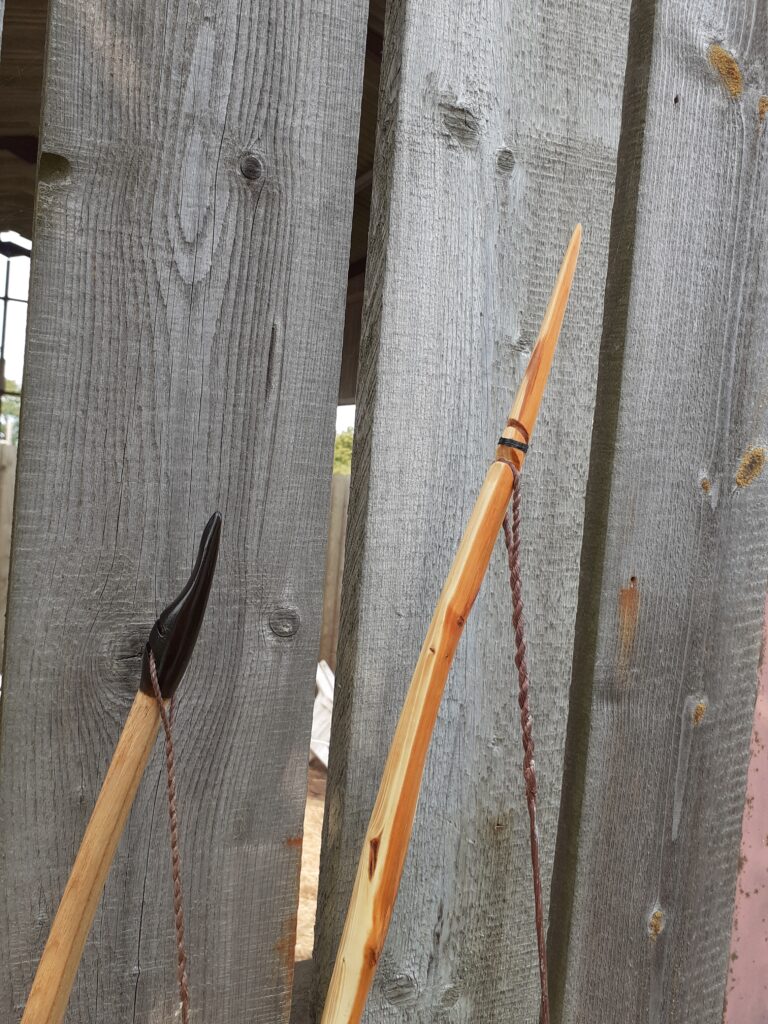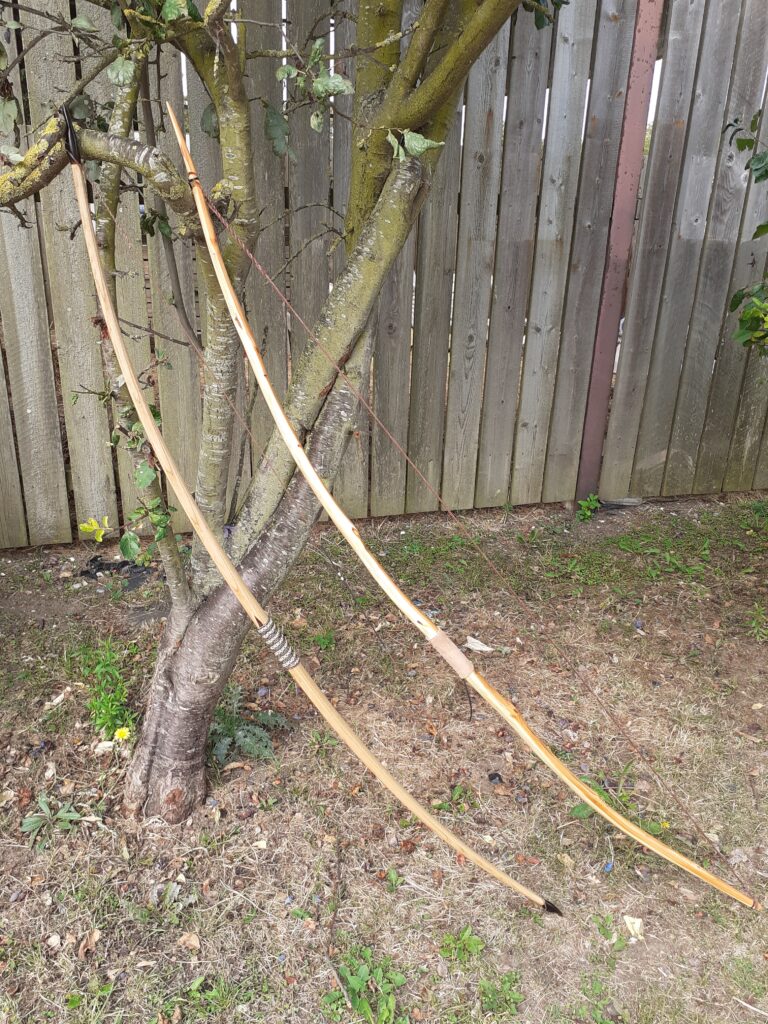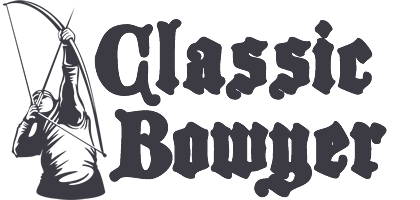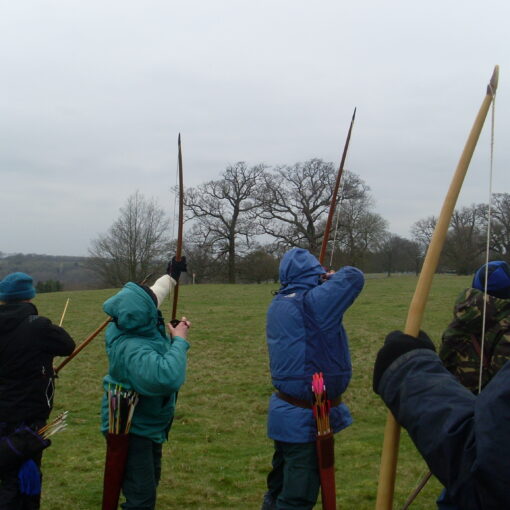Conventional wisdom in the bowyers art these days seems to hold to the opinion that yew from our British isles is at worst useless, and at best highly inferior to all imported yew. I do not think it is a point of view that would have been adhered to in the middle ages, certainly early in the middle ages and most probably later too. While it is true that vast numbers of staves were imported to this country in the 15th and 16th centuries, the main reason for this is likely to have been increasing depletion of domestic stock in earlier centuries. In 1436, four ships were chartered by Nicholas Hisham of York to sail to Prussia to acquire yew staves for bows due to the scarcity in Britain. Prior to this Henry V had sent his bowyer Nicolas Frost out to collect British yew staves for his legendary Agincourt campaign. This was probably no less than the medieval longbow’s most iconic moment in popular perception. If someone knows nothing about archery or the longbow, they will at least know of the battle of Agincourt!
The kind of staves imported by bowyers from the West of the USA – like oregon yew, is indeed fine wood with close, straight, clean grain. Also that which is imported from Alpine Europe has similar characteristics, though tends to be a bit knottier and possessing more small ‘pins’. These woods undoubtedly can and do make fine bows.
However, I have made myself and know other bowyers – amateur and semi-professional who have also made, good bows that shoot hard and fast from yew harvested from our very own British soil! Chris Boyton, a highly regarded bowyer now sadly no longer with us, stated that the best yew he had seen came from Britain. I would say the vast majority of yew trees that you will see growing would never yield you a longbow, being too contorted of growth and lacking long enough and straight enough growth for longbow staves. However, seek hard enough and you shall find! There are trees there with suitable growth. Much of it may be ‘characterful’ with some knots and interesting shapes! But many do not see this as a serious disadvantage and many people positively like the aesthetic of it. It also presents no real mehanical disadvantage when within the limits of viability of making a bow at all. A few years ago, I did ‘strike gold’ with some home-grown yew and came by an exceptionally clean-grown trunk from which I was able to make a few bows. I recieved feedback from one of the customers to whom one of these bows went, and he remarked that its performance was indeed better than a bow he had of Alpine yew with similar specifications.
Welsh yew has a good reputation, and Warbow Wales’ bowyer and archer Jeremy Spencer made a flight bow from Welsh yew that was shot by champion archer Al Aston to achieve a wooden flight arrow/self-longbow FITA world record distance of 371 yards.
The evidence of my own experience seems to debunk the notion that growth ring count is crucial to making a good longbow. There are longbows with as little as ten rings to the inch that shoot as well as those with five times as many! My personal take on this is that lignin and cellulose content is more important for a strong resilient bowstave. The heartwood of yew requires the hard substance lignin (that gives wood its hardness and ‘woodiness’), while the extension-resitant heartwood requires cellulose. How this is divided up seems not that relevant. I liken it to a bacon sandwich …You can have many layers of thin bread and bacon or few layers of door-stop bread and chunky bacon …it is still the same amount of bread and bacon! It is often argued that a tree grown at altitude that experiences more extremes of cold and possibly heat/solar radiation developes a stronger wood. Could you also not say that a tree that grows at lower elevations in a maritime climate with a tendency to windy and stormy conditions might not be stimulated to lay down good levels of lignin and cellulose, in order to be strong enough to stay standing?
It has been suggested that the damp, mild climate of the British Isles, disinclined as it is to extremes does not make for good growth of yew, or even any other wood. If you were to say that, then you would also need to include the wood from areas of countries like Denmark, France, the Low Countries etc., many of which have evidence of much use of wooden bows made from indigenous wood in the past.
That brings me on to a recent bow of mine I made for a customer from English yew. It is a bow of migration-era style …a ‘Saxon’ bow, modelled after the 4th century archaeological finds at Nydam Mose in Denmark. It is a ‘character’ stave which retains a reflex after tillering and shoots 200 yards with a field arrow. Draw-weight is 55lb at 28″. In the pictures below, the bow is to the right.






